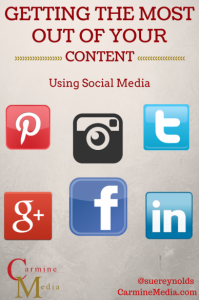Let’s say that your brand has $ 10K to dedicate to customer marketing efforts this quarter. Would you rather shell out that $ 10K for an Instagram influencer to strike a perfectly filtered pose with your product or use those dollars to reward your most vocal and well-connected customers for sharing your brand and directly bringing in new revenue?
The choice is obvious, but many brands are missing out on the opportunity to engage and reward their most active and loyal customers in the race for virality and one-time traffic boosts. It’s easy to get starstruck by the likes, follows, and shares that have become synonymous with recommendations from micro-influencers, but real success comes from attracting customers that actually stick.
Customers still value strong brands, but what constitutes a strong brand is now more dependent on customers’ direct experience with an offering, and with their relationship with the firm that produces it. That suggests that marketing resources now directed at brand building should be more fully integrated with those designed to reinforce relationships. – “Why Strong Customer Relationships Trump Powerful Brands”, Harvard Business Review
So what’s the best approach for marketing to customers? Actively incorporating customers into your marketing outreach. The most effective way to get your customers to invest in your brand is to invest in them. Entice participation in a referral program with a purposeful reward structure; generate more revenue by running segmented campaigns to your most loyal customers; increase brand awareness by encouraging sharing through refer-a-friend programs. That’s just the tip of the iceberg, here are a couple of questions to help you determine if micro-influencers or your raving customer base can help you reach your revenue goals.
1. What’s the difference between customers and micro-influencers?
Through micro-influencer marketing, brands partner with online personas who have created an enviable reputation and a captive audience without the hassle of full-blown celebrity endorsements. The exact definition of micro-influencer is still being decided as brands select personas with as little as 1,000 followers all the way up to 200,000 followers to champion their brand’s products or services.
A customer is someone who buys goods or services from a business, but Merriam-Webster also defines a customer as a person who has a particular quality. Brands that want to create a customer-focused influencer campaign should pay attention to this distinction. Instead of merely viewing customers as shoppers, understand that customers present endless opportunities for partnerships and referrals.
2. How should my brand be marketing to customers?
Do you know what MahoganyCurls, SunKissAlba, and Naptural85 were doing years before partnering with Shea Moisture for that ground-breaking #BREAKTHEWALLS commercial? They were furthering customer influence by singing the praises of Shea Moisture to an intimate group of online followers (and there’s YouTube evidence to prove it).
That doesn’t mean that every one of your well-followed customers will achieve micro-influencer status. In fact, being an informed and engaged customer is more than enough. Your customers have always been and will always be the most reliable source for retrieving customer insight and building social proof.
With an automated marketing platform, your company can pinpoint customers who actively refer and interact with your business then incorporate them into a cohesive marketing campaign. Customer-focused campaigns are equipped to encourage and reward the sharing behavior of your vocal and knowledgeable customers. By sharing unique links in emails and social mentions, your customers can loop you in on online brand conversations. This means you’ll know who to reward and you’ll be able to link new leads to existing customers without the guesswork.
According to a recent survey conducted online by Harris Poll on behalf of Ambassador, across a variety of industries, 92% of 18-to-34 year-olds say they seek recommendations from friends and family when considering a product purchase — 10% greater than the general population. For modern brands looking to further customer marketing efforts, there’s no better resource than monitoring the sharing behavior of your existing customers.
Even without the sizable following of a micro-influencer, trustworthy messages from a loyal customer can make a big impact on tightly-knit networks. Plus, the customers who have grown familiar with your company are likely to invest more than just a post on a crowded timeline. When it comes to a successful customer marketing strategy, engagement matters much more than reach.
The benefits of customer influencers
Many brands are attempting to mold micro-influencers in the shape of their customers, but there’s no substitute for the real thing. Adopt an automated marketing platform to incorporate loyal and vocal customers into your influencer marketing strategy. Your customers and your bottom line will thank you for it.
Business & Finance Articles on Business 2 Community
(180)




